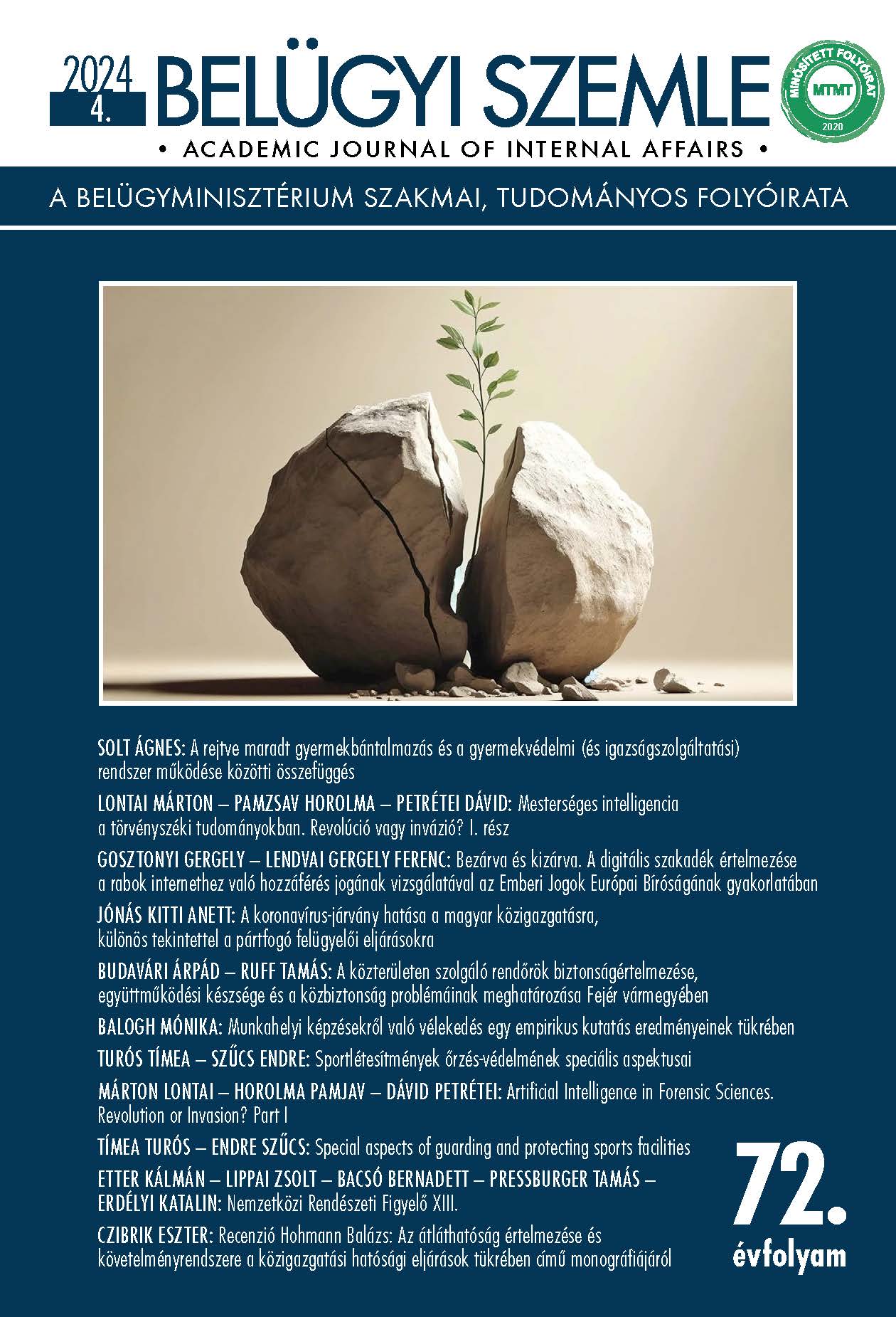Abstract
Aim: The study shows how the level of latency of domestic violence and child abuse is related to the functioning of the child protection and criminal justice systems.
Methodology: The three research methods used for the study include both qualitative and quantitative elements. The research was conducted over five years. The total number of criminal case files processed for the offence of child endangerment exceeds 1300. The documentary analysis involved the inclusion of nearly 40 variables, and the results were obtained using both mathematical statistical methods (SPSS) and content analysis.
Findings: Effective child protection and a well-functioning justice system lead to less latency. However, challenging and inefficient machinery increases the level of latency. Findings based on empirical research point to exactly how and by what means the functioning of the system, its shortcomings and failings, lack of child-centeredness focus, contributes to high levels of latency and undermines public trust.
Value: The study aims to contribute to more effective child protection by identifying dysfunctional systemic elements.
References
Babity M. (2013). A gyermekbántalmazás rizikótényezőinek vizsgálata. Doktori értekezés. Pécsi Tudományegyetem Bölcsészettudományi Kar. https://core.ac.uk/download/pdf/80161575.pdf
Balogh A. (2018). Kiskorú veszélyeztetésének bűntette a bírósági határozatok kritikai tükrében – különös tekintettel a fizikailag bántalmazott gyermekekre – II. rész: A cselekmény és az eredmény. Ügyészek Lapja, 25(6), 15–40.
Balogh A. (2019). Kiskorú veszélyeztetésének bűntette a bírósági határozatok kritikai tükrében – különös tekintettel a fizikailag bántalmazott gyermekekre III. rész. Ügyészek Lapja, 26(1), 5–22.
Baracsi K., Vidra Zs. & Sebhelyi V. (2015). Child Trafficking in Hungary Sexual Exploitation, Forced Begging and Pickpocketing. Central European University.
Bencze-Bózsár S. (2017). A gyermekbarát igazságszolgáltatás gyakorlati érvényesülése. Magyar Bírói Egyesület.
Farkas J. (2013). Gyermekek sérelmére elkövetett családon belüli erőszak. Doktori értekezés. Miskolci Tudományegyetem Deák Ferenc Állam- és Jogtudományi Doktori Iskola. https://doi.org/10.14750/ME.2013.001
Komlósiné Sógor I. (2017). A kiskorú veszélyeztetése bűntett bizonyíthatóságának problémái. Eljárásjogi Szemle, 3, 11–16. http://eljarasjog.hu/2017-evfolyam/a-kiskoru-veszelyeztetese-buntett-bizonyithatosaganak-problemai/
Parti K., Virág Gy. & Solt Á. (2018). Gyermekkorúak meghallgatása a büntetőeljárás során Magyarországon az európai és nemzetközi standardok tükrében. Kriminológiai Tanulmányok, 55, 63–86.
Solt Á. (2022a). Hogyan veszélyeztetjük a gyerekeket? Jogerős esetek változásai 2015 évről 2020-ra. Ügyészek Lapja, 29(1-2), 87–95.
Solt Á. (2022b). Otthoni erőszakosságok. Belügyi Szemle, 70(8), 1671–1686. https://doi.org/10.38146/BSZ.2022.8.6
Solt Á. (2022c). Kimondani, megoldani – együtt! Szakmaközi párbeszéd és nyílt szakmai diskurzus. Belügyi Szemle, 70(11), 2411–2414. http://doi.org/10.38146/BSZ.2022.11.51
Solt Á. (2023). A kiskorú veszélyeztetése bűntett szociológiai háttere. Kriminológiai Tanulmányok, 60, 121–139. http://doi.org/10.58655/KT.60.2023-7

This work is licensed under a Creative Commons Attribution-NonCommercial-NoDerivatives 4.0 International License.
Copyright (c) 2024 Academic Journal of Internal Affairs

